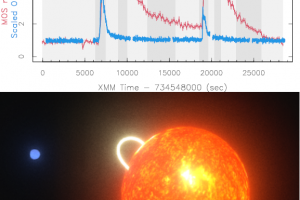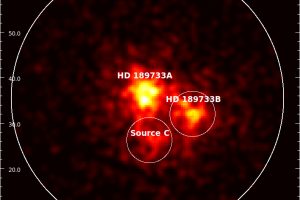Two bright flares in DS Tuc A and their impact on the nearby planet. The paper: “X-ray flares of the young planet host Ds Tucanae A” of I. Pillitteri recently appeared on A&A

Flares are among the most energetic magnetic phenomena occuring in stars. They are triggered by a sudden release of energy previously stored in the stellar magnetic field, and then they culminate with the formation of magnetic loops in the stellar coronae filled by X-ray and UV emitting plasma at million degrees. Sometimes, these magnetic structures erupt, releasing in the surrounding
» Read more
